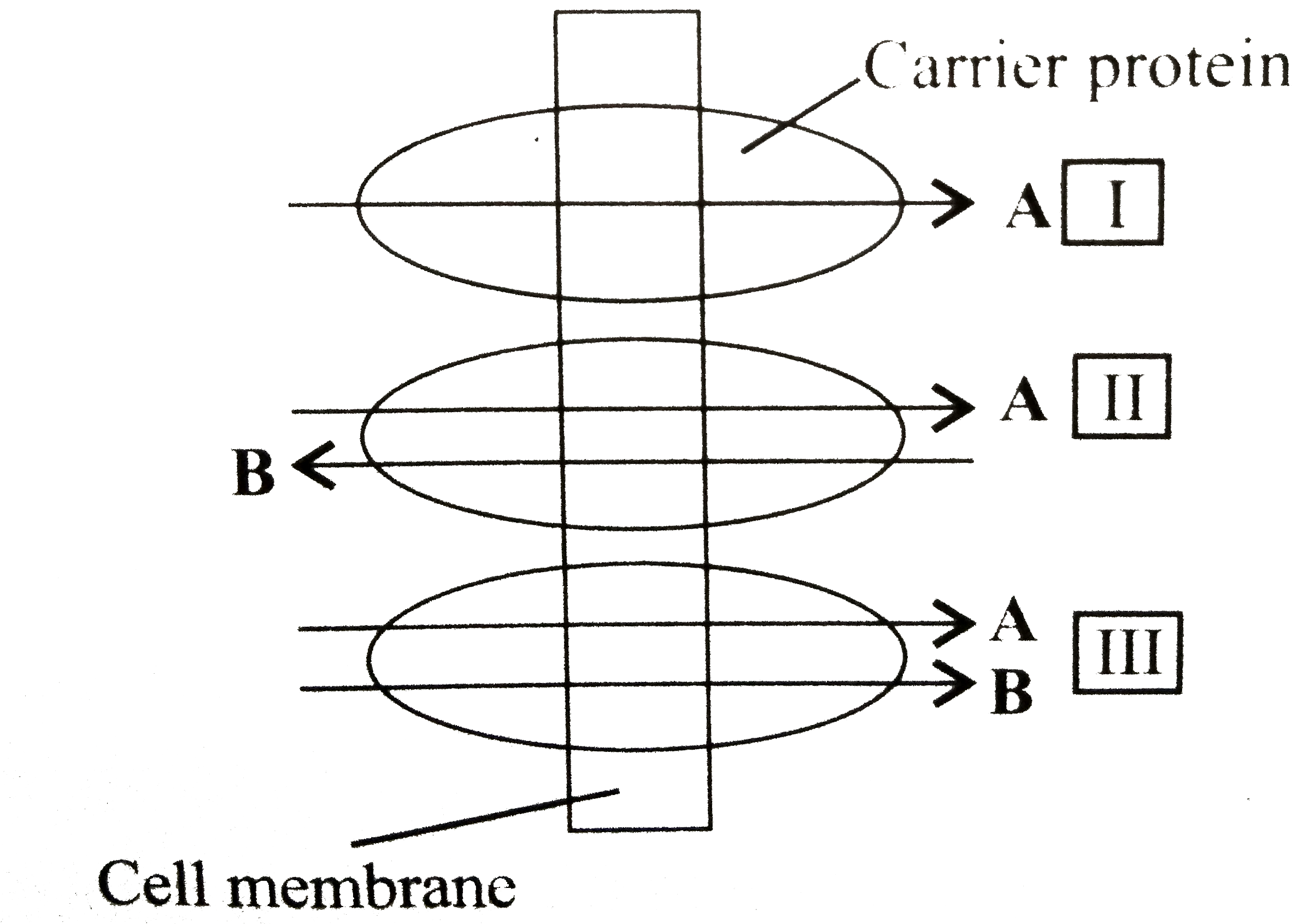Simple as well as facilitated diffusion both (correct one) –
Do not require ATP energy
Show uphill transport
Require special membrane proteins
Can not transfer the substances having a hydrophobic moiety
The correct Answer is:A
Step-by-Step Solution:
1. Understanding Simple Diffusion:
- Simple diffusion is the movement of particles from an area of high concentration to an area of low concentration, which is also known as downhill transport.
- It does not require any energy (ATP) as it occurs along the concentration gradient.
2. Understanding Facilitated Diffusion:
- Facilitated diffusion also involves the movement of particles along the concentration gradient (from high to low concentration).
- However, it requires special membrane proteins (carrier proteins) to assist in the transport of substances across the cell membrane.
- Like simple diffusion, facilitated diffusion does not require ATP energy.
3. Analyzing the Options:
- Option 1: "Don't require ATP energy": This is correct for both simple and facilitated diffusion.
- Option 2: "Show uphill transport": This is incorrect. Both types of diffusion are downhill processes.
- Option 3: "Require special membrane proteins": This is incorrect for simple diffusion, as it does not require proteins; only facilitated diffusion requires them.
- Option 4: "Can't transfer the substance having a hydrophobic moiety": This is incorrect because substances can be transported depending on the type of transport and the nature of the molecules.
4. Conclusion:
- The correct statement for both simple and facilitated diffusion is that they "don't require ATP energy".
- Simple diffusion is the movement of particles from an area of high concentration to an area of low concentration, which is also known as downhill transport.
- It does not require any energy (ATP) as it occurs along the concentration gradient.
- Facilitated diffusion also involves the movement of particles along the concentration gradient (from high to low concentration).
- However, it requires special membrane proteins (carrier proteins) to assist in the transport of substances across the cell membrane.
- Like simple diffusion, facilitated diffusion does not require ATP energy.
- Option 1: "Don't require ATP energy": This is correct for both simple and facilitated diffusion.
- Option 2: "Show uphill transport": This is incorrect. Both types of diffusion are downhill processes.
- Option 3: "Require special membrane proteins": This is incorrect for simple diffusion, as it does not require proteins; only facilitated diffusion requires them.
- Option 4: "Can't transfer the substance having a hydrophobic moiety": This is incorrect because substances can be transported depending on the type of transport and the nature of the molecules.
- The correct statement for both simple and facilitated diffusion is that they "don't require ATP energy".
Topper's Solved these Questions
Similar Questions
Knowledge Check
The given figure shows transport of two molecules A and B through three different modes of facilitated diffusion. Select the correct option regarding it.
 AIIIIII(a)UniportSymportAntiportBIIIIII(a)UniportAntiportSymportCIIIIII(a)AntiportUniportSymportDIIIIII(a)AntiportSymportUniport
AIIIIII(a)UniportSymportAntiportBIIIIII(a)UniportAntiportSymportCIIIIII(a)AntiportUniportSymportDIIIIII(a)AntiportSymportUniport
Facilitated diffusion involve
View SolutionIn which type of passive transport-simple diffusion or facilitated diffusion—a carrier protein is required for transport across the membrane?
View SolutionA special type of facilitated diffusion related to movement of solvents only through living systems is called
View SolutionFacilitated diffusion is characterised by all , except
View SolutionSynthesis of ATP by enzymes present on thylakoids does not involve
(a) a transmembrane channel
(b) change in confirmation of F1
(c) facilitated diffusion of protons across the membrane
(d) diffusion of electrons along with protons back to the stroma.
View SolutionRead the following statements and choose the correct ones--
(A) Diffusion is a slow process and is dependent on a living system.
(B) Diffusion of substances with hydrophilic moiety is facilitated by membrane proteins.
(C) Facilitated diffusion causes net transport of molecules from a low to a high concentration.
(D) Saturations may be achieved in both facilitated diffusion as well as active transport .
View SolutionWhich of these properties are seen in both facilitated diffusion as well as active transport ?
I. Requires ATP for energy .
II. Highly selective process .
III. Occurs against the concentration gradient.
IV. There occurs transport saturation .
View Solution
